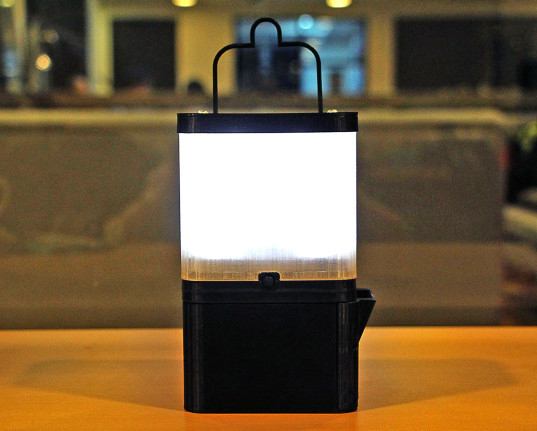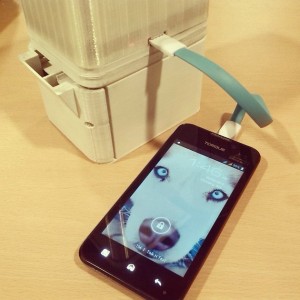
When you’re living in a remote area that’s miles away from the grid, you need to find alternative ways to power your daily activities. The SALt lamp requires only a cup of salt water in order to provide eight hours of bright LED light.
Some communities who live on the most remote of the 2000 populated islands of the Philippines turn to alternative power sources by necessity, because the distance between the islands makes it almost impossible to connect them all to the electrical grid. It was on one of these islands that engineer and co-founder of SALt, Aisa Mijeno, conceived of the salt-powered lamp. After seeing how natives of the Butbut community relied on inconsistent moonlight and kerosene lamps in order to do evening work, Mijeno designed an alternative. Kerosene lamps work well for their purpose, but they are a significant fire hazard, and users need to continually purchase more fuel to refill the lamps. Produced from fossil fuel sources, Kerosene isn’t renewable over the long-term. Burning it releases pollutants like carbon monoxide, sulfur dioxide, and fine particulate matter into the air. Battery-powered lamps exist as an alternative, but they only run for so long before needing to be recharged. Because the SALt lamp uses seawater as its battery’s electrolyte solution, there’s no recharging necessary at all.
A saltwater-powered battery
SALt stands for Sustainable Alternative Living, and conveniently also tells us what the lamp’s power source is: salt. A battery consists of two electrodes submerged in an electrolyte solution, and in the case of the SALt lamp, that solution is salt water, which is refilled by the user as needed. The LEDs inside will work for approximately eight hours for every cup of salt water. The housing for the lamp includes a small USB port, too, so the battery inside can be used to recharge small electronics – a critical function in a remote area, or one recovering from a natural disaster.

The recipe for the electrolyte solution is two tablespoons of table salt to one cup (8 ounces) of water – tap water is fine – which means that it’s incredibly easy to use. It’s even more convenient for communities that live near the ocean, because the salinity of seawater is exactly right for the SALt lamp. Just scoop up salt water at the beach, and you’ve got light that will last all evening. With appropriate maintenance, the electrodes can withstand daily use for over six months before needing to be replaced. If the light is used less frequently, their useful lifespan can be extended to over a year.
The SALt lamp has earned its creator several innovation and entrepreneurship awards, and is currently in production to meet local need in the Philippines. It isn’t yet available for purchase online, so don’t go fumbling for your salt shaker in the dark quite yet. You can add your email address to their mailing list, though, if you want to stay up-to-date on the project and learn when you can buy a lamp of your own.
Images from salt.ph